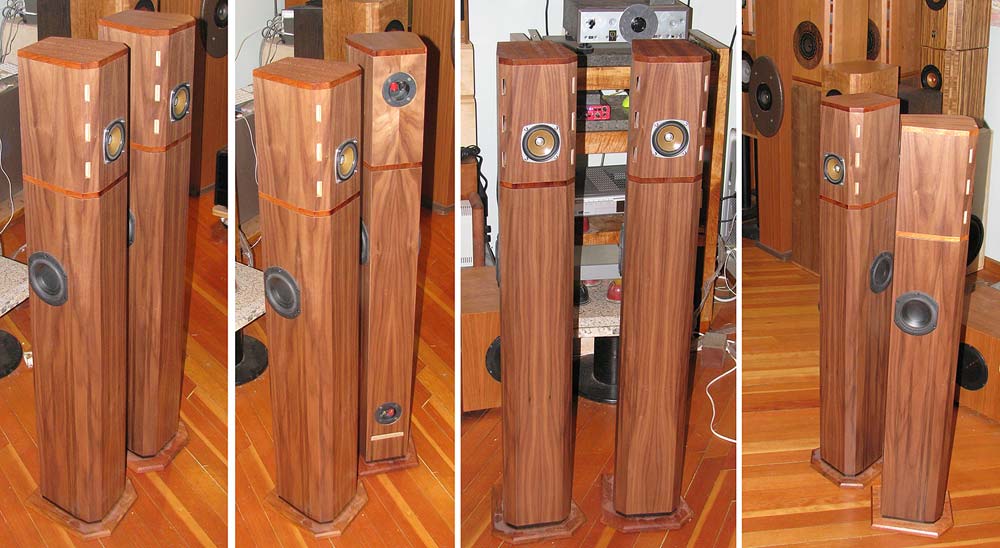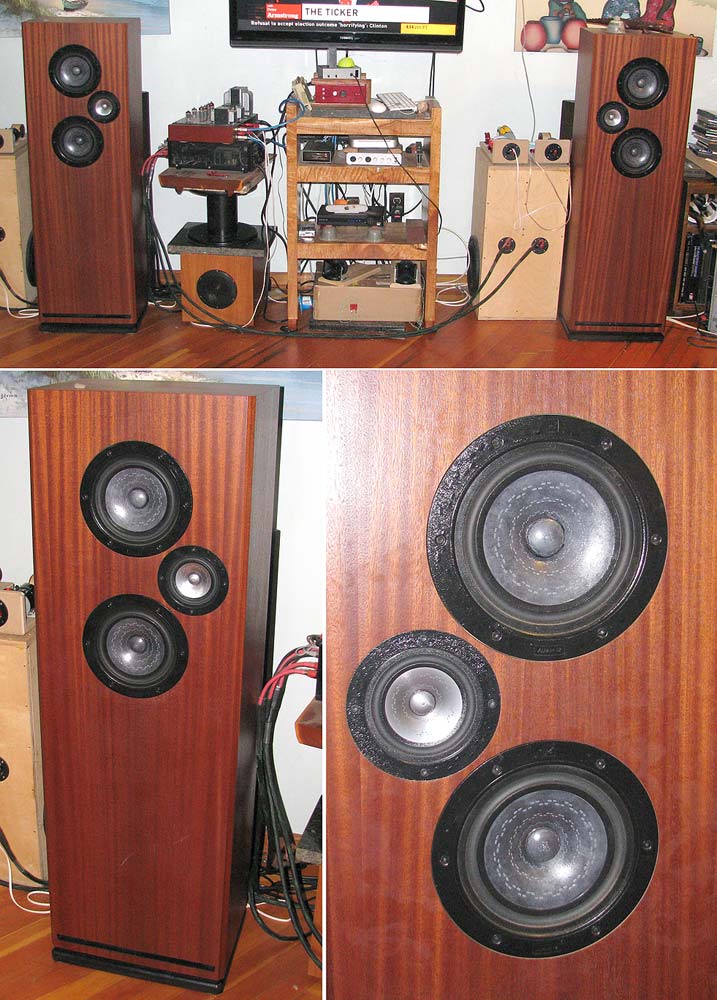I have read only half of this thread, but had not seem anyone mention that DSP, coupled with better and better and cheaper and cheaper measurement software will allow users to tailor the system to the listening space. Something that was not easily done in the past.
I have read only half of this thread, but had not seem anyone mention that DSP, coupled with better and better and cheaper and cheaper measurement software will allow users to tailor the system to the listening space. Something that was not easily done in the past.
exactly.
True DSP solution means:
.: Steep slope electronic crossovers + linear phase as a bonus
.: 1 channel of amplification per driver or group of the same driver
.: EQ correction for each driver, in order to extract the very best within their mechanical/electrical limits
.: Room corrections
Alltogether, pound-for-pound, the sonic result will always be FAR better than any passive set-up.
Or prove me wrong.
Sounds very complicated to the average consumer. Apart from bluetooth setups, this is exactly why there's a future for the humble passive speaker.
Nothing like a vague thread to excite great interest at diyaudio.com. What I usually notice is that very few people even build their own stuff these days. There was a time when I believed in pure electronic amplification and digital or DSP filters.
But, these days, I'm not so sure. There is a terrific balance in speaker design between mechanical and electrical properties. For sure, electrical is more linear. Which might mean we go for metal cones and tweeters and hope to shunt out the resonant breakup horrors.
IMO, what we are up against is the Universe's ability to know exactly what we are listening to. Once you split a speakers electrical path between two or three drivers, something just gives the whole process away. In other words, whatever we do is hearable. My own preference is for headphones on a single driver.
Multiway is a whole different issue. 😱
But, these days, I'm not so sure. There is a terrific balance in speaker design between mechanical and electrical properties. For sure, electrical is more linear. Which might mean we go for metal cones and tweeters and hope to shunt out the resonant breakup horrors.
IMO, what we are up against is the Universe's ability to know exactly what we are listening to. Once you split a speakers electrical path between two or three drivers, something just gives the whole process away. In other words, whatever we do is hearable. My own preference is for headphones on a single driver.
Multiway is a whole different issue. 😱
IMO, what we are up against is the Universe's ability to know exactly what we are listening to. Once you split a speakers electrical path between two or three drivers, something just gives the whole process away. In other words, whatever we do is hearable. My own preference is for headphones on a single driver.
Multiway is a whole different issue. 😱
Have you tried Flare Audio's single driver iems? 5.5mm beryllium driver. really good imho.
scott - cute what you're doing with your avatar - the past participle of see is SAW
Last edited:
Those are the helper woofers. You said subs, not me.


dave
Thanks for the pictures Dave, i understand better now.
That is exactly WAW, isnt it?
Wideband Assisted Wideband?
That is exactly WAW, isnt it?
Wideband Assisted Wideband?
Yes. The big ones now have a passive XO and A7 MOAP and i fear i will not get them back from Chris.
The small ones caused a lot of raised eyebrows when they were 1st demoed at diyFEST (1 year past), it is quite amazing how well those 2 Peerless 4” handle the bass (a 3-wat would add atmosphere generators (subwoofers) below 40-50 Hz)
dave
as long as you have low enough Fs and decent Xmax, you CAN get good 1st octave (at least at low-moderate volume)...
I haven't been lucky enough to find anything that stacks up to fixing acoustic issues in the acoustic domain. I think it would take the fun out of it..that DSP, coupled with better and better and cheaper and cheaper measurement software will allow users to tailor the system to the listening space.
I haven't been lucky enough to find anything that stacks up to fixing acoustic issues in the acoustic domain. I think it would take the fun out of it..
There isn't anything.
DSP is a last resort when circumstances do not allow fixing acoustic problems acoustically.
The last part puzzled me 😕.....I've only just got it...🙄😱scott - cute what you're doing with your avatar - the past participle of see is SAW
I think crossover design is mostly an acoustic concern. Cal's analogy seems good to me.I think it's a bit different, though.I wonder if the same question would have been asked about tubes when the transistor came along?
Yes, and interestingly I went into JB HiFi today, and was very surprised to see a quite large vinyl section. It wasn't cheap either. The cheapest albums were $39.99 and the most expensive I saw was $54.99
CD's by comparison were ranging from $9 to about $24.
I'm sure the same was said about vinyl when CD came out 😀
Tony.
CD's by comparison were ranging from $9 to about $24.
I'm sure the same was said about vinyl when CD came out 😀
Tony.
There isn't anything.
DSP is a last resort when circumstances do not allow fixing acoustic problems acoustically.
Why? Just don't use it to fix the room. 😉 Pick a concept that works with the room.
Control the drivers with DSP, like passive components would do, even fix timing errors but don't try and fix room problems, avoid or solve those passively.
What elements of the driver's operation can be controlled by DSP that aren't affected by room problems?
- Status
- Not open for further replies.
- Home
- Loudspeakers
- Multi-Way
- Is there any Future for high-end PASSIVE multi-way
